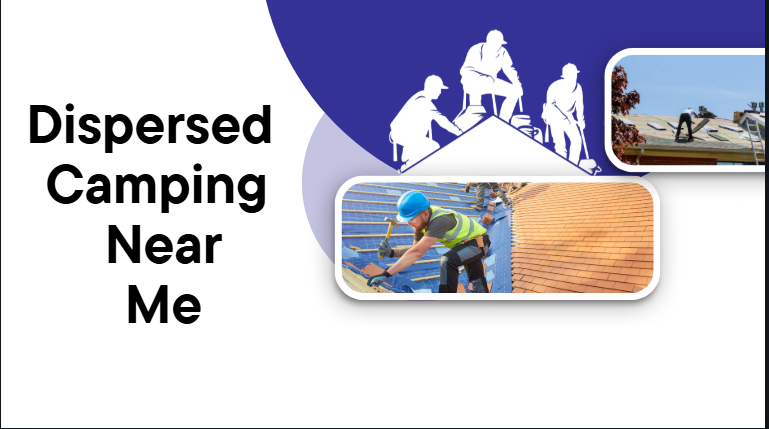Camping is one of the best ways to enjoy nature, relax, and escape from the busy life of cities. Many people think of camping only at paid campgrounds with facilities. But there is another exciting way to camp called dispersed camping. If you are searching for “dispersed camping near me,” this guide will explain everything in simple words.
What is dispersed camping?
Dispersed camping means setting up your tent or parking your RV outside of developed campgrounds. It usually happens on public lands like national forests or Bureau of Land Management (BLM) lands.
Unlike regular campgrounds, dispersed camping does not provide:
- Bathrooms
- Running water
- Picnic tables
- Trash service
This makes it a more natural and free experience.
Also Read : Spread Creek Dispersed Camping
Why Choose Dispersed Camping?
People love dispersed camping for many reasons:
- Free or very low cost—Most places allow it without fees.
- Privacy—You can find a quiet spot away from the crowds.
- Adventure—It feels wild and close to nature.
- Flexibility—You choose your own spot instead of a reserved site.
If you enjoy peace and open space, dispersed camping is perfect for you.
How to Find Dispersed Camping Near Me
When you search online for “dispersed camping near me,” you will see many options. Here are the best ways to find them:
1. National Forest Websites
Every national forest has maps and rules for dispersed camping. Look up the forest near your area.
2. BLM (Bureau of Land Management) Lands
In western states of the U.S., BLM land offers plenty of space for free camping.
3. Apps and Websites
Tools like The Dyrt, FreeRoam, and Campendium help you find free camping spots with reviews.
4. Ranger Stations
You can call or visit local ranger stations for advice on safe and legal places to camp.
Rules of Dispersed Camping
While dispersed camping is free and open, there are some important rules:
- Stay away from water sources (at least 200 feet).
- Leave no trace—pack out all your trash.
- Use existing fire rings if fires are allowed.
- Limit your stay—most areas allow 14 days in one spot.
- Respect wildlife and avoid disturbing nature.
Following these rules keeps the land clean for everyone.
What to Pack for Dispersed Camping
Since there are no facilities, you need to bring everything yourself. Here is a checklist:
- Tent, sleeping bag, and sleeping pad
- Drinking water or a water filter
- Food and cooking supplies
- Portable stove or firewood (if allowed)
- Trash bags
- First aid kit
- Flashlight or lantern
- Maps and compass or GPS
Being prepared will make your trip safe and enjoyable.
Safety Tips for Dispersed Camping
Dispersed camping is fun, but you should be careful.
- Check weather reports before you go.
- Tell someone your location and return time.
- Avoid wild animals and keep food sealed.
- Do not camp alone if you are new.
- Stay on roads and trails to avoid getting lost.
Safety is the key to a happy camping trip.
Best Areas for Dispersed Camping in the U.S.
If you are wondering where to go, here are some popular regions:
- Rocky Mountain National Forests (Colorado)
- Sierra Nevada and Inyo National Forest (California)
- Mount Hood National Forest (Oregon)
- Arizona desert lands (near Sedona and Flagstaff)
- Appalachian forests (East Coast)
Each area offers unique beauty, from mountains to deserts.
Benefits of Searching “Dispersed Camping Near Me”
Typing “dispersed camping near me” online gives you:
- Closest public lands for camping
- Maps and driving directions
- Reviews from other campers
- Information about road access
- Local rules and fire restrictions
This makes it easy to plan without spending hours researching.
Common Challenges in Dispersed Camping
Even though it is fun, there are challenges:
- No bathrooms—you must dig a hole or use portable toilets.
- No water—you need to bring your own.
- Difficult roads—Many spots require a high-clearance vehicle.
- Limited phone service—Stay prepared with offline maps.
If you plan well, these challenges can be managed.
FAQs
1. Is dispersed camping free?
Yes, most dispersed camping spots on national forest or BLM land are free. Some may charge a small fee in busy areas.
2. Can I camp anywhere in the forest?
No, you must follow rules. Usually, camping is allowed along forest roads but not near water sources or private land.
3. Do I need a permit?
Most areas do not need a permit. However, some popular forests may require one. Always check local rules.
4. How long can I stay?
The common rule is 14 days in one place, then you must move at least 5 miles away.
5. Is dispersed camping safe?
Yes, if you prepare well. Bring enough supplies, follow safety tips, and respect nature.
6. Can I have a campfire?
It depends on fire restrictions. In dry seasons, campfires may be banned. Always check with the ranger station.
Final Thoughts
Dispersed camping is one of the most exciting and budget-friendly ways to explore the outdoors. If you search dispersed camping near me you will find many hidden gems in forests, deserts, and mountains. Remember to follow rules, stay safe, and respect the environment. This way, you can enjoy peace, adventure, and freedom in nature.




